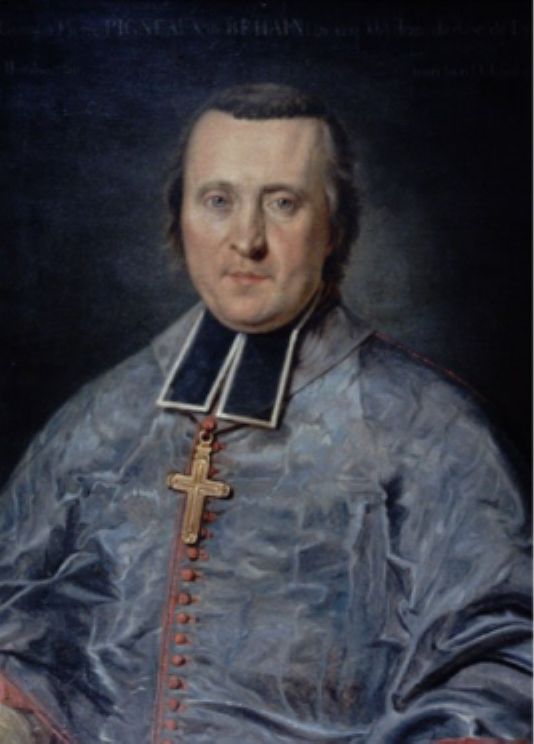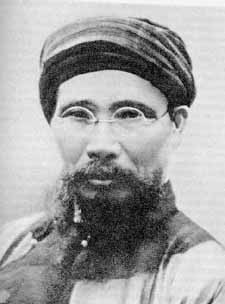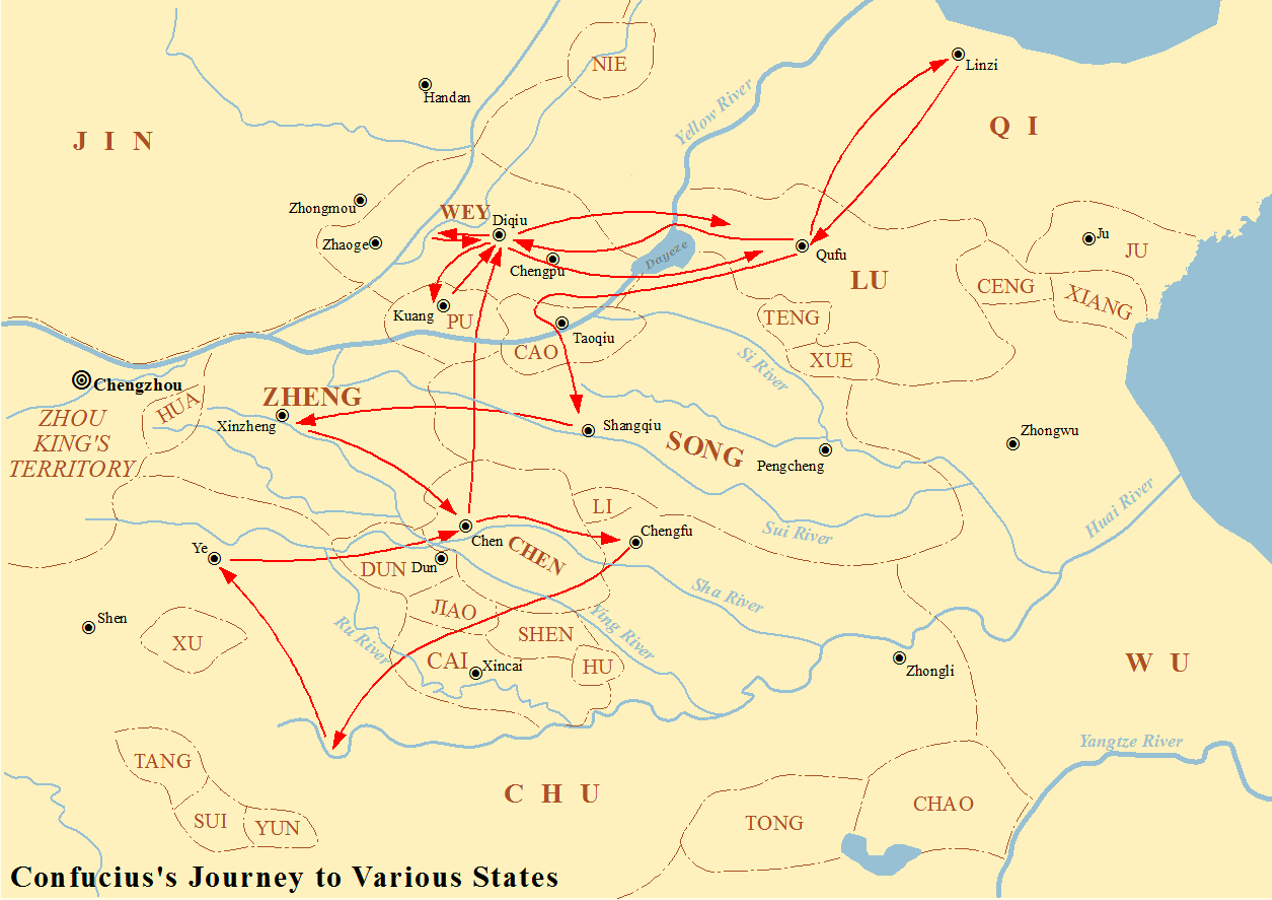|
Triệu Tổ Miếu
The Ancestral Temple of the Founder (, vi-hantu, 肇祖廟) was built either in 1804 or during the third year of Gia Long's rule to commemorate Duke Nguyễn Kim who was the ancestor of Nguyễn dynasty. __TOC__ History Ancestral Temple of the Founder is located to the north of the Ancestral Temple. Its design was inspired by Ming's architecture, most notably with a rectangular perimeter that represents the character ''vương'' (王), three main doors facing southward. The interior of the temple consists of an altar, on which two plaques of the founding ancestor and his lady are placed. A poem in Literary Chinese can be found inscribed on the ceiling, with its content praising the following merit of Duke Nguyễn Kim, :開國承家,''Khai quốc thừa gia,'' (Founding the nation, succeeding the family) :守成繼體。''Thủ thành kế thể.'' (Safeguarding and continuing the legacy) :報本崇原,''Báo bản sùng nguyên,'' (Repaying the roots and honoring the origins ... [...More Info...] [...Related Items...] OR: [Wikipedia] [Google] [Baidu] |
Imperial City, Huế
Imperial is that which relates to an empire, Emperor, emperor/empress, or imperialism. Imperial or The Imperial may also refer to: Places United States * Imperial, California * Imperial, Missouri * Imperial, Nebraska * Imperial, Pennsylvania * Imperial, Texas * Imperial, West Virginia * Imperial, Virginia * Imperial County, California * Imperial Valley, California * Imperial Beach, California Elsewhere * Imperial (Madrid), an administrative neighborhood in Spain * Imperial, Saskatchewan, a town in Canada Buildings * Imperial Apartments, a building in Brooklyn, New York * Imperial City, Huế, a palace in Huế, Vietnam * Imperial Palace (other) * Imperial Towers, a group of lighthouses on Lake Huron, Canada * The Imperial (Mumbai), a skyscraper apartment complex in India * Imperial War Museum, a British military museum and organisation based in London, UK * * Imperial War Museum Duxford, an aviation museum in Cambridgeshire, UK * * Imperial War Museum North, a milit ... [...More Info...] [...Related Items...] OR: [Wikipedia] [Google] [Baidu] |
Huế
Huế (formerly Thừa Thiên Huế province) is the southernmost coastal Municipalities of Vietnam, city in the North Central Coast region, the Central Vietnam, Central of Vietnam, approximately in the center of the country. It borders Quảng Trị province, Quảng Trị to the north, Quảng Nam and Đà Nẵng to the south, Salavan province, Salavan of Laos to the west and the South China Sea to the east. As one of the country's six direct-controlled municipality, direct-controlled municipalities, it falls under the administration of the Politics of Vietnam, central government. Huế has 128 km of coastline, 22,000 hectare, ha of lagoons and over 200,000 ha of forest. The city is located in the middle of the North Central and South Central regions (including the South Central Coast and Central Highlands (Vietnam), Central Highlands), and is transitional in many aspects: geology, climate, administrative division and local culture. Huế and its surroundings is widely k ... [...More Info...] [...Related Items...] OR: [Wikipedia] [Google] [Baidu] |
Gia Long
Gia Long (Chữ Hán, Chữ hán: 嘉隆) ( (''Hanoi, North''), (''Ho Chi Minh City, South''); 8 February 1762 – 3 February 1820), born Nguyễn Phúc Ánh (阮福暎) or Nguyễn Ánh (阮暎), was the founding emperor of the Nguyễn dynasty, the last List of Vietnamese dynasties, dynasty of Vietnam, which would rule the unified territories that constitute modern-day Vietnam until 1945. A nephew of the last Nguyễn lords, Nguyễn lord who ruled over Đàng Trong, south Vietnam, Nguyễn Ánh was forced into hiding in 1777 as a 15-year-old when his family was slain in the Tây Sơn Tây Sơn wars, revolt. After several changes of fortune in which his loyalists regained and again lost Saigon, he befriended the French Catholic Church, Catholic Bishop Pierre Pigneau de Behaine. Pigneau championed Nguyễn Ánh's cause to regain the throne to the French government and managed to recruit volunteer; however, that soon fell through. From 1789, Nguyễn Ánh was once again in the ... [...More Info...] [...Related Items...] OR: [Wikipedia] [Google] [Baidu] |
Nguyễn Kim
Nguyen Kim (; 1468–1545) was a Vietnamese statesman who was the ancestor of the famous Nguyễn Lords who later ruled south Vietnam (and much later, all of Vietnam). During his rule, the war with the Mạc dynasty started. Nguyễn Kim claimed descent from Nguyễn Trãi, one of the top aides of Lê Lợi. He was the son of Nguyễn Hoang Du, one of the leaders of the first revolt against Mạc Đăng Dung). After the first revolt was crushed and his father executed, a second revolt against Mạc Đăng Dung took place in response to Dung's usurpation of the throne in 1527. This second revolt was led by Nguyễn Kim and his son-in-law, Trịnh Kiểm. Career In 1527, a high-rank military officer of the weakened court, Mạc Đăng Dung, seized power of Đại Việt. He deposed the ruling Lê monarch, Lê Cung Hoàng and made himself ruler of Đại Việt. In 1529, Nguyễn Kim who was a loyalist of the old royal family, went to Laos and submitted to the Laotian king P ... [...More Info...] [...Related Items...] OR: [Wikipedia] [Google] [Baidu] |
Nguyễn Dynasty
The Nguyễn dynasty (, chữ Nôm: 茹阮, chữ Hán: 朝阮) was the last List of Vietnamese dynasties, Vietnamese dynasty, preceded by the Nguyễn lords and ruling unified Vietnam independently from 1802 until French protectorate in 1883. Its emperors were members of the House of Nguyễn Phúc. During its existence, the Nguyễn empire expanded into modern-day Southern Vietnam, Cambodia, and Laos through a continuation of the centuries-long Nam tiến and Siamese–Vietnamese wars. With the French conquest of Vietnam, the Nguyễn dynasty was forced to give up sovereignty over parts of French Cochinchina, Southern Vietnam to France in 1862 and 1874, and after 1883 the Nguyễn dynasty only nominally ruled the French protectorates of Annam (French protectorate), Annam (Central Vietnam) as well as Tonkin (French protectorate), Tonkin (Northern Vietnam). Backed by Empire of Japan, Imperial Japan, in 1945 the last Nguyễn emperor Bảo Đại abolished the protectorate treat ... [...More Info...] [...Related Items...] OR: [Wikipedia] [Google] [Baidu] |
Thái Tổ Miếu
Cài () is a Chinese-language surname that derives from the name of the ancient Cai state. In 2019 it was the 38th most common surname in China, but the 9th most common in Taiwan (as of 2018), where it is usually romanized as "Tsai" (based on Wade-Giles romanization of Standard Mandarin), "Tsay", or "Chai" and the 8th most common in Singapore, where it is usually romanized as "Chua", which is based on its Teochew and Hokkien pronunciation. Koreans use Chinese-derived family names and in Korean, Cai is 채 in Hangul, "Chae" in Revised Romanization, It is also a common name in Hong Kong where it is romanized as "Choy", "Choi" or "Tsoi". In Macau, it is spelled as "Choi". In Malaysia, it is romanized as "Choi" from the Cantonese pronunciation, and "Chua" or "Chuah" from the Hokkien or Teochew pronunciation. It is romanized in the Philippines as "Chua" or "Chuah", and in Thailand as "Chuo" (ฉั่ว). Moreover, it is also romanized in Cambodia as either "Chhay" or "Chhor" amo ... [...More Info...] [...Related Items...] OR: [Wikipedia] [Google] [Baidu] |
Ming Dynasty
The Ming dynasty, officially the Great Ming, was an Dynasties of China, imperial dynasty of China that ruled from 1368 to 1644, following the collapse of the Mongol Empire, Mongol-led Yuan dynasty. The Ming was the last imperial dynasty of China ruled by the Han people, the majority ethnic group in China. Although the primary capital of Beijing fell in 1644 to a rebellion led by Li Zicheng (who established the short-lived Shun dynasty), numerous rump state, rump regimes ruled by remnants of the House of Zhu, Ming imperial family, collectively called the Southern Ming, survived until 1662. The Ming dynasty's founder, the Hongwu Emperor (1368–1398), attempted to create a society of self-sufficient rural communities ordered in a rigid, immobile system that would guarantee and support a permanent class of soldiers for his dynasty: the empire's standing army exceeded one million troops and the naval history of China, navy's dockyards in Nanjing were the largest in the world. H ... [...More Info...] [...Related Items...] OR: [Wikipedia] [Google] [Baidu] |
Literary Chinese In Vietnam
Literary Chinese (Vietnamese language, Vietnamese: , ; chữ Hán: 漢文, 文言) was the medium of all formal history of writing in Vietnam, writing in Vietnam for almost all of the country's history until the early 20th century, when it was replaced by vernacular literature, vernacular writing in Vietnamese using the Latin-based Vietnamese alphabet. The language was the same as that used in China, as well as in Korea and Japan, and used the same standard Chinese characters. It was used for official business, historical annals, fiction, verse, scholarship, and even for declarations of Vietnamese determination to resist Chinese invaders. Literary Chinese Literary Chinese was a style of writing modelled on the classics of the Warring States period and Han dynasty, such as the ''Mencius (book), Mencius'', the ''Commentary of Zuo'' and Sima Qian's ''Records of the Grand Historian, Historical Records''. It remained largely static while the various varieties of Chinese evolved and di ... [...More Info...] [...Related Items...] OR: [Wikipedia] [Google] [Baidu] |
1968 Tet Offensive
The Tet Offensive was a major escalation and one of the largest military campaigns of the Vietnam War. The Viet Cong (VC) and North Vietnamese People's Army of Vietnam (PAVN) launched a surprise attack on 30 January 1968 against the forces of the South Vietnamese Army of the Republic of Vietnam (ARVN), the United States Armed Forces and their allies. It was a campaign of surprise attacks against military and civilian command and control centers throughout South Vietnam. The name is the truncated version of the Lunar New Year festival name in Vietnamese, Tết Nguyên Đán, with the offense chosen during a holiday period as most ARVN personnel were on leave. The purpose of the wide-scale offensive by the Hanoi Politburo was to trigger political instability in a belief that mass armed assault on urban centers would trigger defections and rebellions. The offensive was launched prematurely in the early morning hours of 30 January in large parts of the I and II Corps Tactical Z ... [...More Info...] [...Related Items...] OR: [Wikipedia] [Google] [Baidu] |
United States Department Of State
The United States Department of State (DOS), or simply the State Department, is an United States federal executive departments, executive department of the U.S. federal government responsible for the country's foreign policy of the United States, foreign policy and foreign relations of the United States, relations. Equivalent to the ministry of foreign affairs of other nations, its primary duties are advising the U.S. president on international relations, administering List of diplomatic missions of the United States, diplomatic missions, negotiating international treaties and agreements, protecting citizens abroad and representing the U.S. at the United Nations. The department is headquartered in the Harry S Truman Building, a few blocks from the White House, in the Foggy Bottom, Washington, D.C., Foggy Bottom neighborhood of Washington, D.C.; "Foggy Bottom" is thus sometimes used as a metonym. Established in 1789 as the first administrative arm of the U.S. executive branch, th ... [...More Info...] [...Related Items...] OR: [Wikipedia] [Google] [Baidu] |
Confucius
Confucius (; pinyin: ; ; ), born Kong Qiu (), was a Chinese philosopher of the Spring and Autumn period who is traditionally considered the paragon of Chinese sages. Much of the shared cultural heritage of the Sinosphere originates in the philosophy and teachings of Confucius. His philosophical teachings, called Confucianism, emphasized personal and governmental morality, harmonious social relationships, righteousness, kindness, sincerity, and a ruler's responsibilities to lead by virtue. Confucius considered himself a transmitter for the values of Ancient China, earlier periods which he claimed had been abandoned in his time. He advocated for filial piety, endorsing strong family loyalty, Ancestor veneration in China, ancestor veneration, the respect of elders by their children and of husbands by their wives. Confucius recommended a robust family unit as the cornerstone for an ideal government. He championed the Silver Rule, or a negative form of the Golden Rule, advising, "Do ... [...More Info...] [...Related Items...] OR: [Wikipedia] [Google] [Baidu] |







